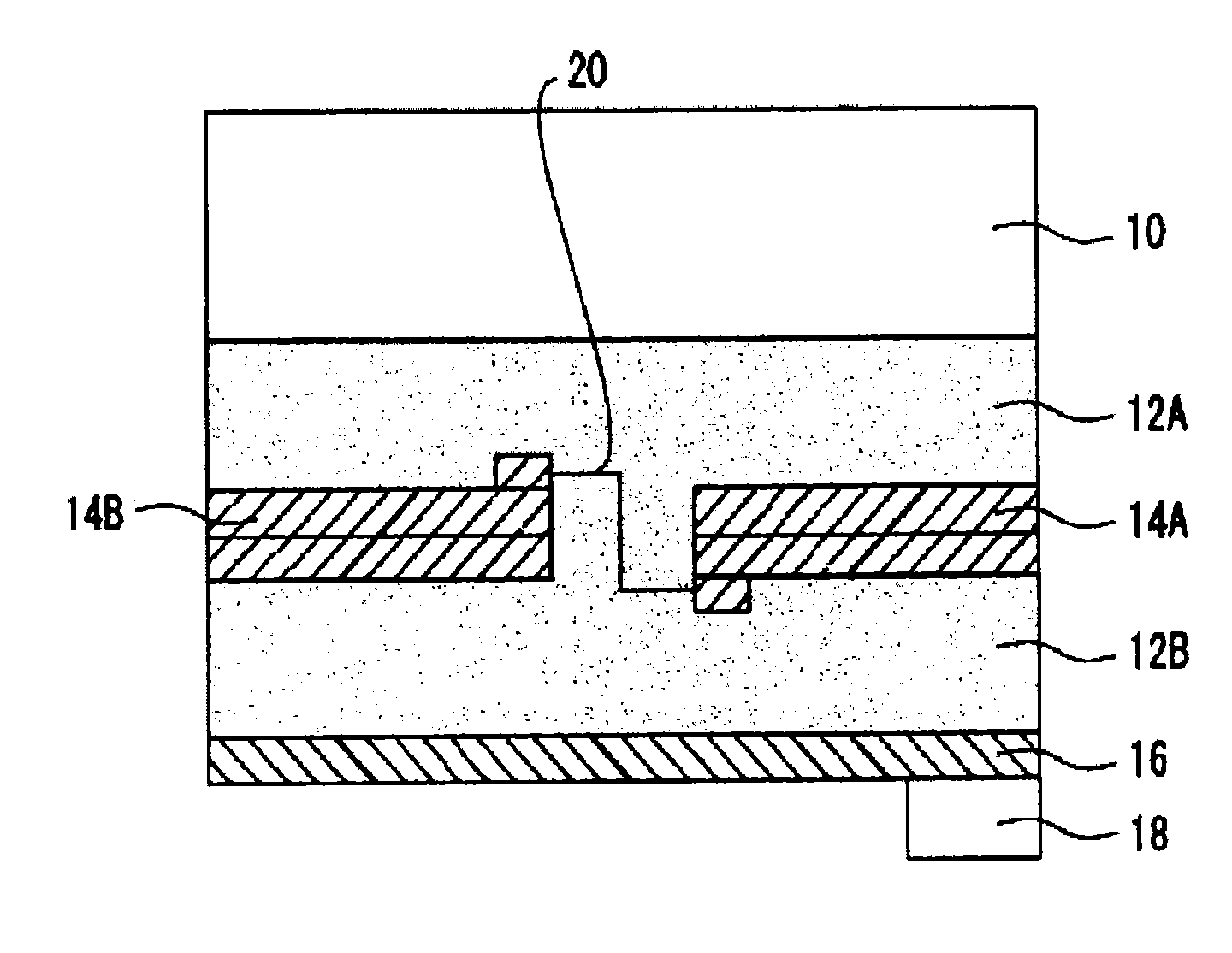Laminate for solar cell and solar cell module produced using same
a technology of solar cells and solar cells, which is applied in the field of solar cell laminates, can solve the problems of circuit corrosion, deterioration of solar cells, and lowering power generation efficiency, and achieves the effects of convenient production of solar cell modules, excellent moisture-proofness, and excellent transparency
- Summary
- Abstract
- Description
- Claims
- Application Information
AI Technical Summary
Benefits of technology
Problems solved by technology
Method used
Image
Examples
examples
[0144]The present invention is described in more detail with reference to the following Examples, however, the present invention is not limited at all by these Examples. The sheets mentioned in the specification were analyzed for their data and evaluations, as mentioned below. In this, the sheet running direction from extruder is referred to as a machine direction, and the direction perpendicular to that direction is referred to as a transverse direction.
(1) Crystal Melting Peak Temperature (Tm)
[0145]Using Perkin Elmer's differential scanning calorimeter, trade name “Pyrisl DSC” and according to JIS K7121, about 10 mg of a sample was heated from −40° C. to 200° C. at a heating rate of 10° C. / min, kept at 200° C. for 1 minute, and then cooled down to −40° C. at a cooling rate of 10° C. / min, and again this was heated up to 200° C. at a heating rate of 10° C. / min, and on the thermogram thus drawn through the cycle, the crystal melting peak temperature (Tm) (° C.) was acquired.
(2) Cryst...
examples 1 to 9
, Comparative Examples 1 to 4, Reference Example 1
[0152]Using a viscoelasticity meter (IT Measurement's trade name: Viscoelasticity Spectrometer DVA-200), a sample was analyzed for the storage elastic modulus (E′) thereof from −100° C. at a oscillation frequency of 10 Hz, at a heating rate of 3° C. / min and at a strain of 0.1% and at a heating rate of 3° C. / min, and from the obtained data, the storage elastic modulus (E′) at 20° C. of the sample was read. Those of which the storage elastic modulus (E′) at 20° C. of from 100 MPa to 1000 MPa were good (O), and the others were not good (x).
examples 11 to 19
, Comparative Examples 5 to 7
[0153]Using IT Measurement's viscoelasticity meter, trade name “Viscoelasticity Spectrometer DVA-200”, a sample (4 mm in length, 60 mm in width) was analyzed in the lateral direction, at a oscillation frequency of 10 Hz, at a strain of 0.1%, at a heating rate of 3° C. / min and at a chuck-to-chuck distance of 25 mm, in a range from −150° C. to 150° C., and from the found data, the storage elastic modulus (E′) at 20° C. of the sample was obtained. The results are shown below, and in addition, the results of evaluation made according to the following standards are also shown.
(OO) The storage elastic modulus (E′) at 20° C. was from 300 MPa to 700 MPa.
(O) The storage elastic modulus (E′) at 20° C. was from 100 MPa to less than 300 MPa, or from more than 700 MPa to 1000 MPa.
(x) The storage elastic modulus (E′) at 20° C. was more than 1000 MPa.
(9) Sealability
[0154]Using a vacuum laminator (NPC's trade name: LM30×30), five layers of a white glass board having a t...
PUM
| Property | Measurement | Unit |
|---|---|---|
| crystal melting peak temperature | aaaaa | aaaaa |
| softening temperature | aaaaa | aaaaa |
| temperature | aaaaa | aaaaa |
Abstract
Description
Claims
Application Information
 Login to View More
Login to View More - R&D
- Intellectual Property
- Life Sciences
- Materials
- Tech Scout
- Unparalleled Data Quality
- Higher Quality Content
- 60% Fewer Hallucinations
Browse by: Latest US Patents, China's latest patents, Technical Efficacy Thesaurus, Application Domain, Technology Topic, Popular Technical Reports.
© 2025 PatSnap. All rights reserved.Legal|Privacy policy|Modern Slavery Act Transparency Statement|Sitemap|About US| Contact US: help@patsnap.com


